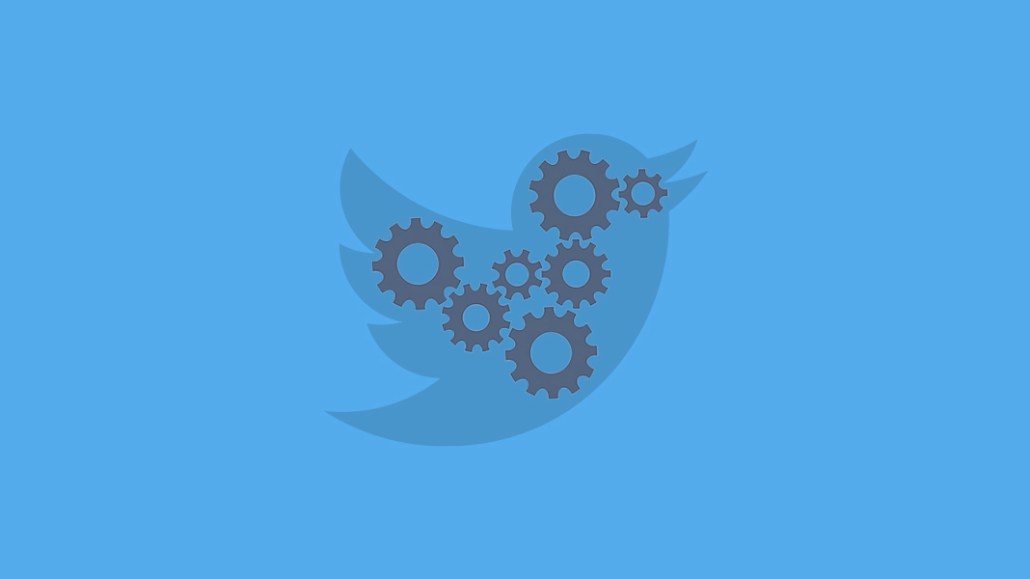Twitter’s got ad tech ambitions but current challenges

Focus is a big theme for Twitter this year. One area CEO Jack Dorsey has zeroed in on: programmatic advertising. Last month, for instance, Dorsey hired ad tech veteran Bruce Falck, former CEO for the demand-side platform Turn, as Twitter’s head of revenue product. In Cannes, Dorsey also said that Twitter is not giving up on ad tech — instead the company will invest more in programmatic by working with third parties this year.
But at the moment, many in the ad tech industry say Twitter has fallen behind its far-larger rivals in Google and Facebook, and Twitter hasn’t yet figured out how its earlier ad tech acquisitions could fit into its overall ad portfolio. Twitter is unable to sell ads outside of the platform programmatically like Facebook, and it cannot directly connected to any demand-side platforms like Google. (Twitter is connected to multiple social bid management tools and supports application-program-interface-based buys, though. Some executives consider API-based buys a form of programmatic.)
What’s more, some question what Twitter’s overall aim is, having bought mobile exchange MoPub in 2013 and retargetter TellApart in 2015. But since then, both have disappointed, according to agencies.
“Twitter doesn’t have an obvious strategy. MoPub would have seemed to be an obvious move toward building out an audience network, but [it] has not since been leveraged as much. While TellApart was never fully integrated, and now it has been shuttered,” said Jay Friedman, COO for programmatic agency Goodway Group. “Neither of these acquisitions ended up filling a vital need for [Twitter’s] core product, and neither makes sense as a long-term standalone.”
Meanwhile, Twitter never aggressively promotes its programmatic solutions like MoPub and TellApart in its sales pitches to media buyers, according to Scott Linzer, vp of media for agency iCrossing, and Nichola Perrigo, director of digital marketing for agency RPA. Both haven’t yet seen a programmatic-geared sales pitch from Twitter; instead, the platform talks a lot about its audience-targeting and data-management capabilities.
“Perhaps there is no need for Twitter to push into ad tech just yet,” said Linzer. “Twitter hasn’t yet been sophisticated about its data, so it’s more important for Twitter to first improve its data to truly understand individual users and then invest in programmatic,” said Linzer.
Friedman agreed that building its own programmatic tech may be less valuable for Twitter than improving its data capabilities. Since people engage more deeply in their interests on Twitter than they do on Facebook, Twitter has lots of valuable data to mine. “The fact that Twitter hasn’t yet properly monetized its data is surprising to me, and it has put the company at a disadvantage in the market,” he said.
A Twitter spokesperson declined to comment for this story.
Every company approaches ad tech differently. Google, for instance, has built a full tech stack and filled a need in its existing offerings by acquiring the likes of Admeld and Invite Media. Facebook has shifted its focus from its own exchange that was shut down last year to its Audience Network business. Twitter, on the other hand, doesn’t seem to have figured out a clear ad tech strategy, according to agency and ad tech executives. But there are ad tech opportunities for Twitter because the platform could easily become relevant in ad tech by linking its MoPub native network into the Twitter dashboard, similar to what Facebook does with the Audience Network, said Garrett Dale, svp of optimization and innovation for programmatic agency Kepler Group.
“There’s also quick money to be made by creating a Twitter DSP that has the exclusive rights to Twitter data, which could be [run] across the RTB supply ecosystem,” said Dale. “But Twitter seems to have already given up on that, making it more likely to follow in Facebook’s footsteps where [the social network] controls all of the demand, the data and the supply.”
More in Marketing

Why the New York Times is forging connections with gamers as it diversifies its audience
The New York Times is not becoming a gaming company. But as it continues to diversify its editorial offerings for the digital era, the Times has embraced puzzle gamers as one of its core captive audiences, and it is taking ample advantage of its advantageous positioning in the space in 2024.

Why B2B marketers are advertising more like consumer brands to break through a crowded marketplace
Today’s marketing landscape is more fragmented than ever. Like consumer brands, business brands are looking to stand out in a crowded and competitive marketplace, making marketing tactics like streaming ads, influencers and humorous spots more appealing.

As draft puts WNBA in spotlight, the NBA is speeding up ballplayers’ transition to creators
The NBA’s star athletes are its greatest marketing asset.








